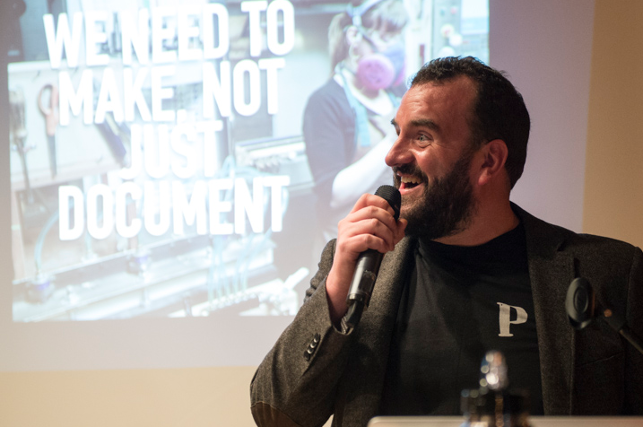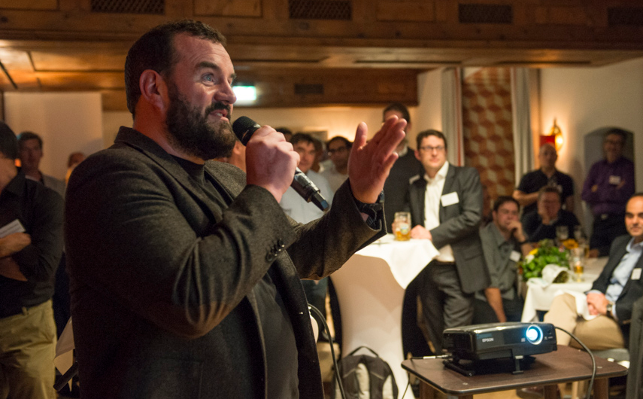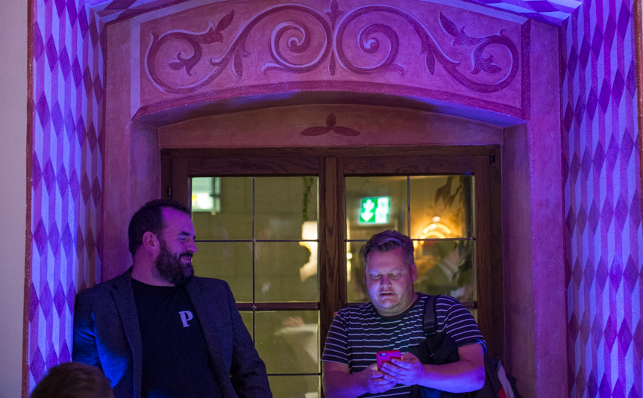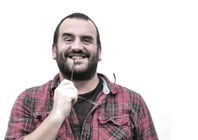Last month, Al Dean gave a talk to an assembled group of software industry folks in Munich. He looked at the current state of the design software and proposed that nothing much has changed. It caused a bit of a hoo-ha

“We need to Make, not just Document”
When the folks at Techsoft3D phoned and asked me to give another talk at their TechSoft After Dark event in Munich, I was hesitant. Like many people who write for a living, I’m dubious about the benefits of public speaking.
It also gives me the major fear. Anyone that’s seen me talk at our DEVELOP3D event will know this all too well: it’s mostly nice-looking slides and a hairy bloke mumbling, if I’m honest.
That said, TechSoft3D is an interesting group. Even if you’ve never heard of the company, the chances are that you’ve used some of the technology from its stable.
From 3D PDF to all manner of display technology, TechSoft3D is both a software developer and a distributor for other companies’ technology — and its customers are the development teams behind products we all use every day. So they’re also a good group to sit around with, sip a beer or two and generally discuss the state of the art.
The event is a networking meet-up after a day of meetings where the development community get together to learn about what their peers are doing and what TechSoft3D have to offer.
The After Dark portion is more informal and typically features outside speakers to provoke debate. That’s where I came in, as the catalyst to give folks something to think about and discuss into the wee small hours.

Hairy bloke rambles about design tools
But what to discuss is a tricky issue. After last year’s talk, I wanted to see if I could stir things up a bit and tackle an issue that we’ve discussed on this back page in the last couple of months: namely, how in many respects, things haven’t changed all that much in the 3D design software industry over the last 20 years.
So armed with a slide deck entitled ‘Design and the Cloud: Same Soup (Reheated)’, I set off to Munich, met my co-founder Martyn Day at the airport and got to work.
The premise was that, looking at the systems I’ve personally used over the last twenty years, a theme emerges. If you break those systems down and compare them to what is considered ‘state of the art’ today, there’s not a huge difference.
Parametric modelling, surface modelling and yes, simulation, are all common factors of the old and the new. Yes, in the ‘old’ days, you could generate associated drawings.
And yes, you could connect to data wherever you were — although it was a lot less quick and easy than it is today.
Essentially, my thesis is that the only real difference is cost — both in terms of the software/service itself and the hardware we run it on.
Whereas once the software cost 20 grand upwards and the hardware was similarly priced, we’re now in an age where ‘bleeding edge’ technology is available at much lower costs and is used in environments that are dramatically cheaper. Software costs between $25 and $100 per month.

Al and Mart (Mart’s face is lit by his smartphone 90% of the time)
Your hardware costs $2,000, rather than $20,000. I then went onto discuss how, from a users’ perspective, it looks like we the customers have been funding the same people, to do the same thing, over and over again, for the last two, if not three, decades.
The folks that developed Pro/Engineer are the same folks behind SolidWorks. The folks that built up SolidWorks are the ones who founded Onshape. That’s just one lineage.
It’s a common thread across the industry. There have been platform shifts. The move from Unix to Windows was a big one. The move from the desktop Windows box to cloud/browser-based solutions is another. Each time, costs drop initially, then increment up. But other than waiting for parity to be achieved in terms of modelling and drawing-creation capability, what do we get that’s new, that’s revolutionary?
At the same time, the environment in which we’re using these tools is shifting and the technology that surrounds them is advancing — whether it’s desktop prototyping (building the need for simple, integrated CAM), whether it’s better and more intelligent support for working with 3D printers and scanners, or whether it’s taking advantage of the soon-to-explode virtual reality industry.
Is the 3D design software industry adapting to these changes? In some cases it is. In others, we’re still on the receiving end of incremental updates that focus on how we generate a fillet or limit an extrusion. Is that really all we get in return for 20 years of investment and development? Platform shifts are always inevitable, but how about some innovation at the same time? As ever, I’m curious to hear what you think.
Not a great deal, asserts Al Dean
Default






